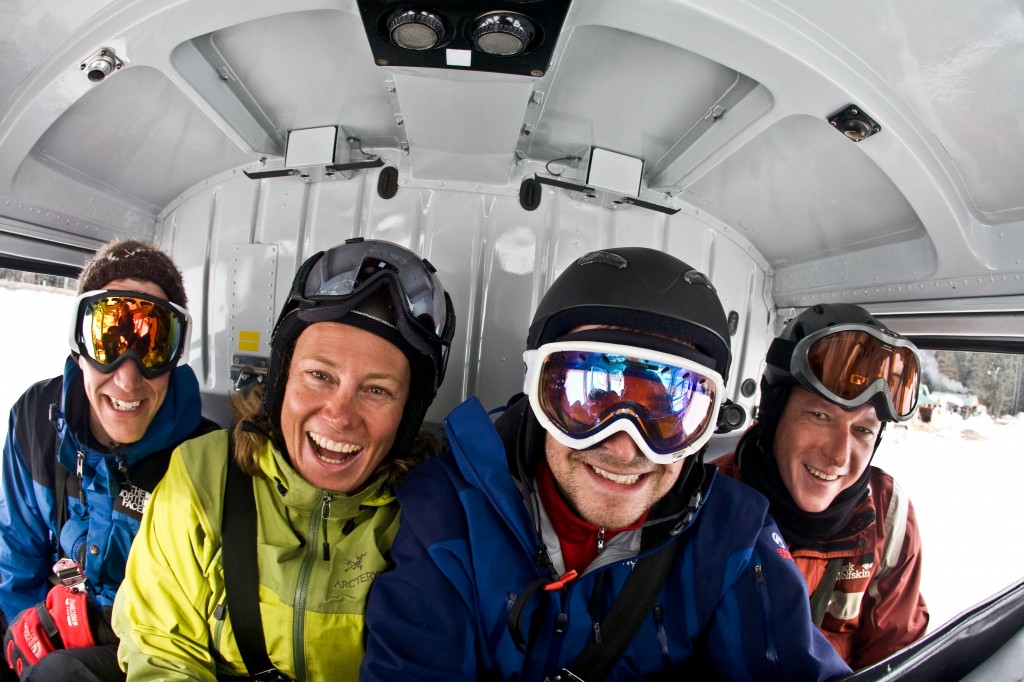Heliskiing Protection & Clothing
The mountains can be wild and dangerous places even when you are within the safe hands of our qualified guides. Without man-made heliskiing protection we would never survive more than a few hours in the wilderness that is British Columbia, let alone be able to play around in this environment day in, day out. So good equipment is essential, and protection comes in many forms against the often-aggressive climate.
Cold
Primarily, and perhaps most obviously, cold is the biggest problem we face when frequently the mountains in the depth of winter. To keep the best snow conditions temperatures need to be below freezing.
Layering is the technique most commonly used to combat the cold. The base layer that sits next to the skin draws sweat away from the body in a process known as ‘wicking’. The best fabrics for this layer are synthetic polyester yarns; avoid cotton, as this stays wet, promoting coldness, and also traps in foul odors.
The middle layer, the insulating layer, traps heat but allows moisture to escape. Treated polyesters that make the fibers stand up on end help to trap a layer of air around the body, keeping it warm. Fleeces are the most common form of insulating layer, and come in a range of weights appropriate for every environment.

The outer layer has to be waterproof and breathable. Gore-Tex is the most commonly known fabric for outer layers, and the newer Gore-Tex XCR fabric used by many brands is said to be up to 25% more breathable than its predecessor. Also look out for windproof technologies, tapered seams, stretchy technical fabrics, and new softskin jackets.
Body Protection
Perhaps next in importance would be protection against falls and crashes, especially ones that involve rocks and trees. These don’t happen often whist heliskiing, and many people choose not to wear any extra protection. However, helmets are becoming more popular, with freeskiers understanding that it only takes one mistake to end a skiing career. There is a huge range of helmets available in the marketplace, with manufacturers such as Giro and Uvex producing theirs from polycarbonate shells molded with shock-absorbing polystyrene foam, eliminating the need for glued in padding. Other features now commonly found include goggle compatibility and built-in audio speakers. The European certification standard to look out for is CE-EN 1077, and the North American counterpart is ASTM F-2040.
Eye Protection
Protection against the sun should never be overlooked, especially on those cold, clear bluebird days that often grace us from the middle of March until the end of April. Look for well-ventilated goggles that will not easily fog up, and lenses that offer protection against all UV rays: UVA, UVB and UVC – though almost all reputable manufacturers have this as standard now. Polarizing lenses will also help reduce glare, improve vision and ultimately improve your skiing.
Heli Skiing, Heliskiing, Heli Ski, Heliski, Heli Skiing Tour, Heli Skiing Holiday, Heli Skiing BC, Heli Skiing Resorts, Heli Skiing Lodges


